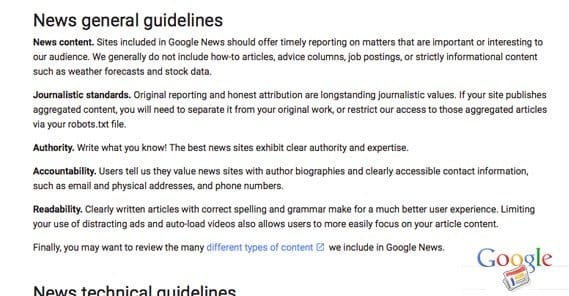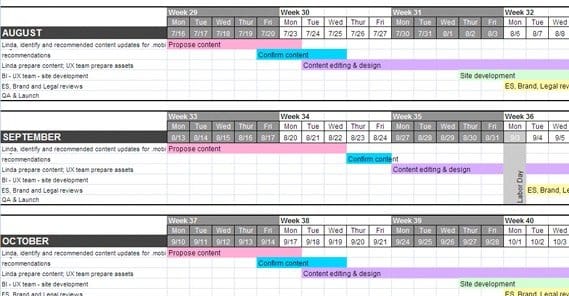3 Steps to Getting Your Blog Accepted by Google News

For a certain subset of sites, getting into Google news is something of a dream. It’s an absolutely wonderful place to be, from a blog and business standpoint. Google news is an incredibly popular source of information, and an astounding number of people use it every day. It also has a stiff selection process, so it takes a lot to get on.
What do you get if you get into Google news?
- Traffic. Google is absolutely packed with traffic, and Google news is no exception. It’s like being part of the biggest, highest quality article directory in the world.
- Links. Google news is highly curated, so it’s assumed that any site it references is going to be an authority. This is an almost automatic source of links.
- Authority. Again, if you’re good enough to get into Google news, you’re good enough to be widely references, cited and watched.
- Priority indexing. Google news needs to be up to the second, and that means any site that’s good enough to get into Google news is almost always watched by the web spiders. The instant your content is published, it’s indexed and added to the news feed.
The only question is; how do you get in?
Step 1: Optimize Your Site For News
Google has very specific requirements for the sites they add to the news feed. You should strive to meet them all.
First, you can’t be a blog with only one author. While you could forge this by buying a lot of content and putting different author names on each piece, it’s easier in the long run to just hire a few extra writers. You should shoot for around 5 writers, so you can be assured of the quality of the posts you’re getting from each of them. Ideally, you’ll have an “about us” page with the bios and information for each author, including links to other sites they write for, when applicable.
Second, you need a contact page. This needs to have at least the basic contact information, like an email address. A contact form is a bonus. You don’t have to list an address or phone number, but it can’t hurt to do so, as long as you can handle the responsibility of managing them.
Next, create a news sitemap. A news sitemap is a little different from a normal sitemap. It includes information beyond just the links to new pages. You also want to include the name of your site, the language, the genre or topic, and whether or not you require registration. It’s helpful to flag non-news posts as such when you publish them, so Google doesn’t feed a site announcement into their news feed.
Whenever you publish a new post, if it’s covering a story that you didn’t originate, you need to flag the source. You do this by adding a meta tag named “syndication-source” to your meta data. Whenever possible, track down the original source of a story and link to it with this meta data. It saves Google time and gives you more credibility.
Step 2: Plan Your Content
There’s one thing that differentiates newsworthy sites from the everyday rabble. This quality is planning. You can’t just give your writers free reign and expect them to be able to keep on topic, on focus and up to date at all times. You need to become the editor in chief of a newspaper, here. You’re the J. Jonah Jameson of web writing.
The easiest way to do this is establish weekly meetings with your writers, editors and anyone else on your news team. In these meetings, you need to talk about the trends, topics and resources necessary to do your job. When a new trend is occurring, figure out what angles you want to cover, what resources you can bring to the table, and what you can do that other news sites can’t.
This is the biggest part of a strategy meeting; figuring out your unique angle. Anyone and everyone can repost the same two-paragraph press release with a few sentences of basic analysis. For proof, just look at any of the thousands of interchangeable, worthless celebrity gossip pages.
For each week, come up with assignments and topics for your writers to watch and work on. Ideally, you’ll leverage their individual talents, inclinations and resources in order to produce unique content that can’t be found on other news sites.
All content, of course, must adhere to certain journalistic standards. You need to be original, you need to be honest, you need to be timely, and you need to be accountable. If your site publishes non-news content, or aggregates content you didn’t write, you need that content flagged so Google doesn’t automate pushing it into the news feed when it shouldn’t be there.
Step 3: Post Frequently
The ideal news site publishes several times per day. This is why I recommend a team of 5 writers, though you can easily go with more. You want at least three posts per day, which can be easily achieved with that many writers. You can also have contract writers on the side for special assignments. More writers makes it easier to publish more content, which in turn makes it easier to have the volume of quality content necessary to make it big on Google news.
You’re probably going to need a bunch of tools to make life easier. A content calendar is a must. You need a collaboration platform for shared resources, drafts and assignments. You need trend monitoring software, whether you use something like Social Mention or another tool entirely. You need a great awareness of your target industry, as well as the competition you have for the news spots. Being able to forecast trends with relative accuracy is a must.
Google news is not for everyone. A site focused on a business blog isn’t going to be able to get the volume, accuracy and speed necessary to be a news site. News sites are very much their own beast, and you need to go into it intentionally trying to create one if you want to be successful.
 ContentPowered.com
ContentPowered.com






